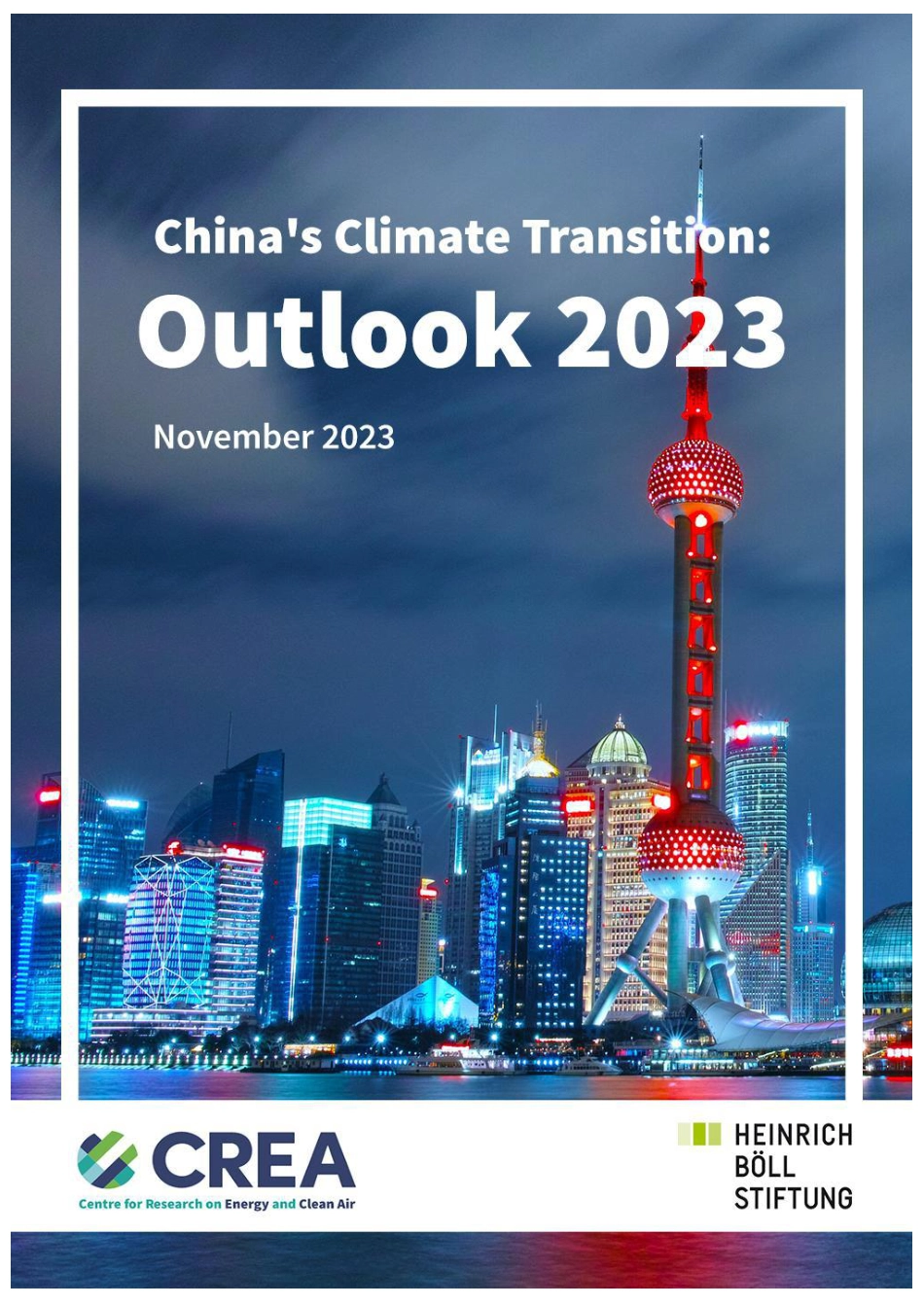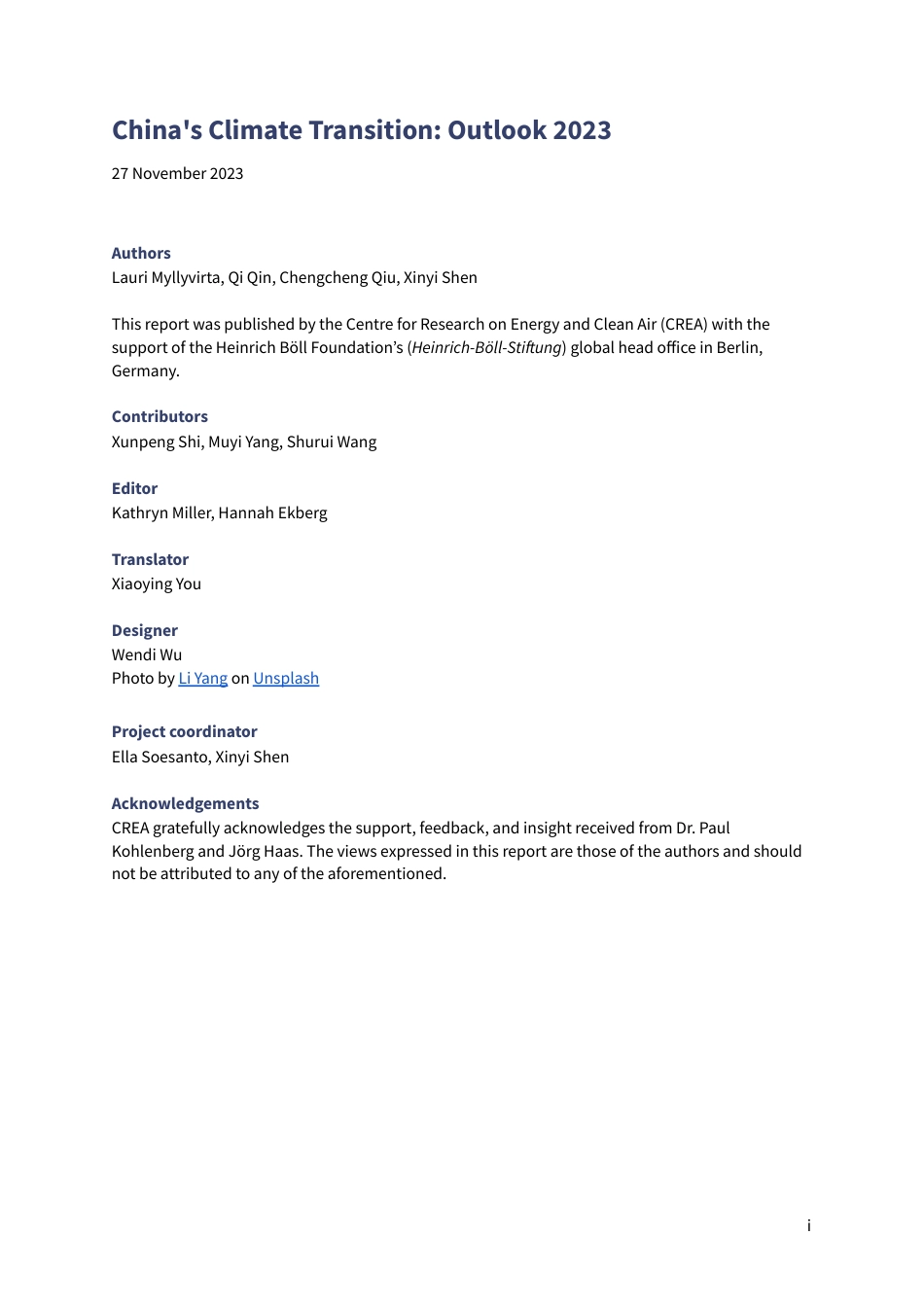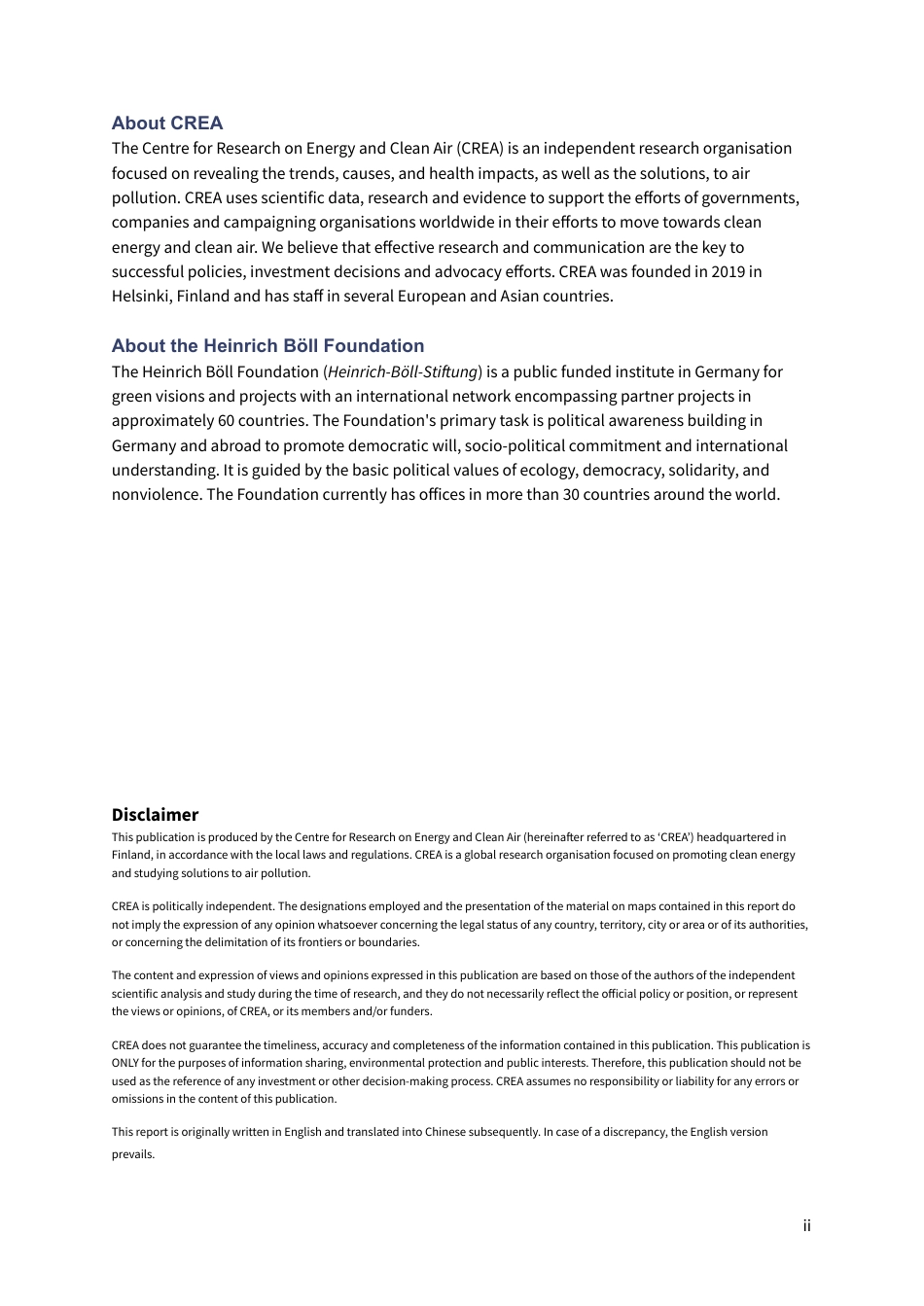2China's Climate Transition: Outlook 202327 November 2023AuthorsLauri Myllyvirta, Qi Qin, Chengcheng Qiu, Xinyi ShenThis report was published by the Centre for Research on Energy and Clean Air (CREA) with thesupport of the Heinrich Böll Foundationʼs (Heinrich-Böll-Sti�ung) global head office in Berlin,Germany.ContributorsXunpeng Shi, Muyi Yang, Shurui WangEditorKathryn Miller, Hannah EkbergTranslatorXiaoying YouDesignerWendi WuPhoto by Li Yang on UnsplashProject coordinatorElla Soesanto, Xinyi ShenAcknowledgementsCREA gratefully acknowledges the support, feedback, and insight received from Dr. PaulKohlenberg and Jörg Haas. The views expressed in this report are those of the authors and shouldnot be attributed to any of the aforementioned.iAbout CREAThe Centre for Research on Energy and Clean Air (CREA) is an independent research organisationfocused on revealing the trends, causes, and health impacts, as well as the solutions, to airpollution. CREA uses scientific data, research and evidence to support the efforts of governments,companies and campaigning organisations worldwide in their efforts to move towards cleanenergy and clean air. We believe that effective research and communication are the key tosuccessful policies, investment decisions and advocacy efforts. CREA was founded in 2019 inHelsinki, Finland and has staff in several European and Asian countries.About the Heinrich Böll FoundationThe Heinrich Böll Foundation (Heinrich-Böll-Sti�ung) is a public funded institute in Germany forgreen visions and projects with an international network encompassing partner projects inapproximately 60 countries. The Foundation's primary task is political awareness building inGermany and abroad to promote democratic will, socio-political c...



